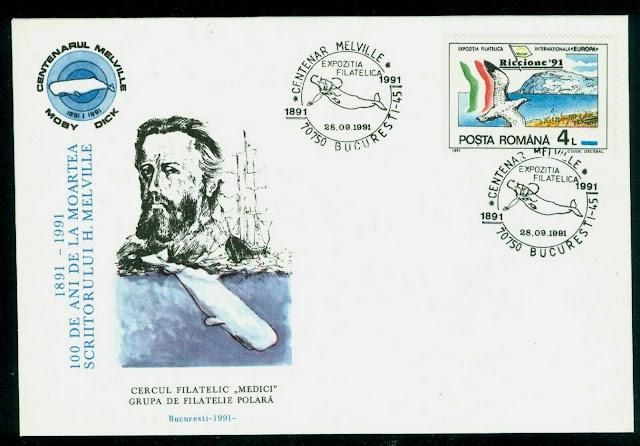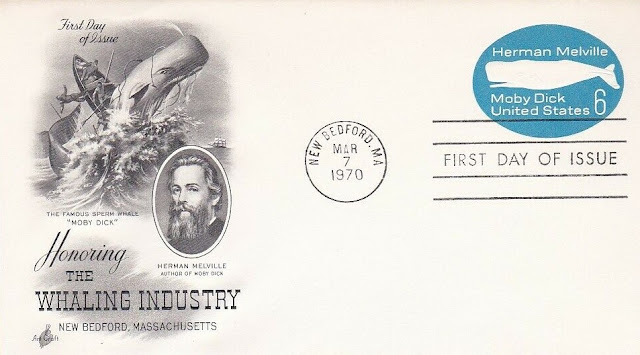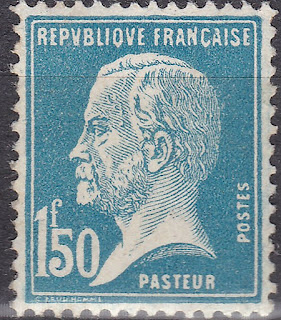Here are some events that happened on September 28th. It could be an event or a person that died or was born on that day
1844 – Oscar I of Sweden–Norway is crowned king of Sweden.
The only child of King Charles XIV & III John, Oscar inherited the thrones upon the death of his father. Throughout his reign he would pursue a liberal course in politics in contrast to Charles XIV, instituting reforms and improving ties between Sweden and Norway. In an address to him in 1857, the Riksdag declared that he had promoted the material prosperity of the kingdom more than any of his predecessors.
Norwegian stamps depicting Oscar I
1852 Born: Henri Moissan, French chemist and academic, Nobel Prize laureate (d. 1907 )
Ferdinand Frédéric Henri Moissan (28 September 1852 – 20 February 1907) was a French chemist and pharmacist who won the 1906 Nobel Prize in Chemistry for his work in isolating fluorine from its compounds. Moissan was one of the original members of the International Atomic Weights Committee.
Moissan was born in Paris on 28 September 1852, the son of a minor officer of the eastern railway company, Francis Ferdinand Moissan, and a seamstress, Joséphine Améraldine (née Mitel). His mother was of Jewish descent, his father wasn't. In 1864 they moved to Meaux, where he attended the local school. In 1870 he left the school without the grade universitaire necessary to attend university. Moissan became a trainee in pharmacy in 1871 and in 1872 he started working for a chemist in Paris, where he was able to save a person poisoned with arsenic. He decided to study chemistry and began first at the laboratory of Edmond Frémy and later at that of Pierre Paul Dehérain. Dehérain persuaded him to pursue an academic career. He passed the baccalauréat, which was necessary to study at university, in 1874 after an earlier failed attempt. He also became qualified as first-class pharmacist at the École Supérieure de Pharmacie in 1879, and received his doctoral degree from the Faculté des Sciences in 1880. During his time in Paris he became a friend of the chemist Alexandre Léon Étard and the botanist Vasque.
He published his first scientific paper, about carbon dioxide and oxygen metabolism in plants, with Dehérain in 1874. He left plant physiology and then turned towards inorganic chemistry; subsequently his research on pyrophoric iron was well received by the two most prominent French inorganic chemists of that time, Henri Etienne Sainte-Claire Deville and Jules Henri Debray. After Moissan received his Ph.D. on cyanogen and its reactions to form cyanures in 1880, his friend Landrine offered him a position at an analytic laboratory. His marriage, to Léonie Lugan, took place in 1882. They had a son in 1885.
During the 1880s, Moissan focused on fluorine chemistry and especially the production of fluorine itself. He had no laboratory of his own, but used several laboratories, for example that of Charles Friedel. There he had access to a strong battery consisting of 90 Bunsen cells which made it possible to observe a gas produced by the electrolysis of molten arsenic trichloride; the gas was reabsorbed by the arsenic trichloride. The electrolysis of hydrogen fluoride yielded fluorine on 26 June 1886. The French academy of science sent three representatives, Marcellin Berthelot, Henri Debray, and Edmond Frémy, to verify the results, but Moissan was unable to reproduce them, owing to the absence from the hydrogen fluoride of traces of potassium fluoride present in the previous experiments. After resolving the problem and demonstrating the production of fluorine several times, he was awarded a prize of 10,000 francs. In subsequent years, until 1891, he focused on the study of fluorine chemistry. He discovered numerous fluorine compounds, such as (together with Paul Lebeau) SF6 in 1901. His research in the production of boron and artificial diamonds and the development of an electrically heated oven capable of reaching 3500 °C using 2200 amperes at 80 volts followed by 1900.
His newly developed arc furnace led to the production of borides and carbides of numerous elements (e.g. silicon boride), another of his research areas.
French stamps depicting Henri Moissan
1891 Died: Herman Melville, American author and poet (b. 1819)
Herman Melville (born Melvill; August 1, 1819 – September 28, 1891) was an American novelist, short story writer, and poet of the American Renaissance period. Among his best-known works are Moby-Dick (1851), Typee (1846), a romanticized account of his experiences in Polynesia, and Billy Budd, Sailor, a posthumously published novella. Although his reputation was not high at the time of his death, the centennial of his birth in 1919 was the starting point of a Melville revival and Moby-Dick grew to be considered one of the great American novels.
Melville was born in New York City, the third child of a prosperous merchant whose death in 1832 left the family in financial straits. He took to sea in 1839 as a common sailor on a merchant ship and then on the whaler Acushnet but he jumped ship in the Marquesas Islands. Typee, his first book, and its sequel, Omoo (1847), were travel-adventures based on his encounters with the peoples of the island. Their success gave him the financial security to marry Elizabeth Shaw, the daughter of a prominent Boston family. Mardi (1849), a romance-adventure and his first book not based on his own experience, was not well received. Redburn (1849) and White Jacket (1850), both tales based on his experience as a well-born young man at sea, were given respectable reviews but did not sell well enough to support his expanding family.
Moby-Dick; or, The Whale is an 1851 novel by American writer Herman Melville. The book is sailor Ishmael's narrative of the obsessive quest of Ahab, captain of the whaling ship Pequod, for revenge on Moby Dick, the giant white sperm whale that on the ship's previous voyage bit off Ahab's leg at the knee. A contribution to the literature of the American Renaissance, the work's genre classifications range from late Romantic to early Symbolist. Moby-Dick was published to mixed reviews, was a commercial failure, and was out of print at the time of the author's death in 1891. Its reputation as a "Great American Novel" was established only in the 20th century, after the centennial of its author's birth. William Faulkner said he wished he had written the book himself, and D. H. Lawrence called it "one of the strangest and most wonderful books in the world" and "the greatest book of the sea ever written". Its opening sentence, "Call me Ishmael", is among world literature's most famous.
Melville began writing Moby-Dick in February 1850, and finished 18 months later, a year longer than he had anticipated. Writing was interrupted by his meeting Nathaniel Hawthorne in August 1850, and by the creation of the "Mosses from an Old Manse" essay as a result of that friendship. The book is dedicated to Hawthorne, "in token of my admiration for his genius".
The basis for the work is Melville's 1841 whaling voyage aboard the Acushnet. The novel also draws on whaling literature, and on literary inspirations such as Shakespeare and the Bible. The white whale is modeled on the notoriously hard-to-catch albino whale Mocha Dick, and the book's ending is based on the sinking of the whaleship Essex in 1820. The detailed and realistic descriptions of whale hunting and of extracting whale oil, as well as life aboard ship among a culturally diverse crew, are mixed with exploration of class and social status, good and evil, and the existence of God. In addition to narrative prose, Melville uses styles and literary devices ranging from songs, poetry, and catalogs to Shakespearean stage directions, soliloquies, and asides.
In October 1851, the chapter "The Town Ho's Story" was published in Harper's New Monthly Magazine. The same month, the whole book was first published (in three volumes) as The Whale in London, and under its definitive title in a single-volume edition in New York in November. There are hundreds of differences between the two editions, most slight but some important and illuminating. The London publisher, Richard Bentley, censored or changed sensitive passages; Melville made revisions as well, including a last-minute change to the title for the New York edition. The whale, however, appears in the text of both editions as "Moby Dick", without the hyphen. One factor that led British reviewers to scorn the book was that it seemed to be told by a narrator who perished with the ship: the British edition lacked the Epilogue, which recounts Ishmael's survival. About 3,200 copies were sold during the author's life.
Covers issued by the United States and Romania to commemorate Herman Melville or Moby Dick
1895 Died: Louis Pasteur, French chemist and microbiologist (b. 1822)
Louis Pasteur (December 27, 1822 – September 28, 1895) was a French biologist, microbiologist, and chemist renowned for his discoveries of the principles of vaccination, microbial fermentation and pasteurization. He is remembered for his remarkable breakthroughs in the causes and prevention of diseases, and his discoveries have saved many lives ever since. He reduced mortality from puerperal fever and created the first vaccines for rabies and anthrax.
His medical discoveries provided direct support for the germ theory of disease and its application in clinical medicine. He is best known to the general public for his invention of the technique of treating milk and wine to stop bacterial contamination, a process now called pasteurization. He is regarded as one of the three main founders of bacteriology, together with Ferdinand Cohn and Robert Koch, and is popularly known as the "father of microbiology".
Pasteur was responsible for disproving the doctrine of spontaneous generation. He performed experiments that showed that, without contamination, microorganisms could not develop. Under the auspices of the French Academy of Sciences, he demonstrated that in sterilized and sealed flasks, nothing ever developed; and, conversely, in sterilized but open flasks, microorganisms could grow. Although Pasteur was not the first to propose the germ theory, his experiments indicated its correctness and convinced most of Europe that it was true.
Today, he is often regarded as one of the fathers of germ theory. Pasteur made significant discoveries in chemistry, most notably on the molecular basis for the asymmetry of certain crystals and racemization. Early in his career, his investigation of tartaric acid resulted in the first resolution of what is now called optical isomers. His work led the way to the current understanding of a fundamental principle in the structure of organic compounds.
He was the director of the Pasteur Institute, established in 1887, until his death, and his body was interred in a vault beneath the institute. Although Pasteur made groundbreaking experiments, his reputation became associated with various controversies. Historical reassessment of his notebook revealed that he practiced deception to overcome his rivals
Stamps from France, Monaco and Estonia depicting Louis Pasteur












No comments:
Post a Comment